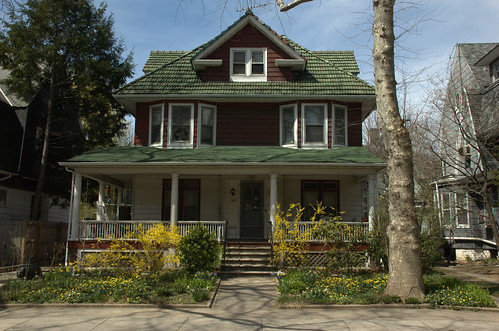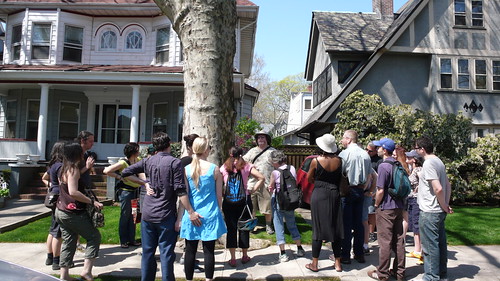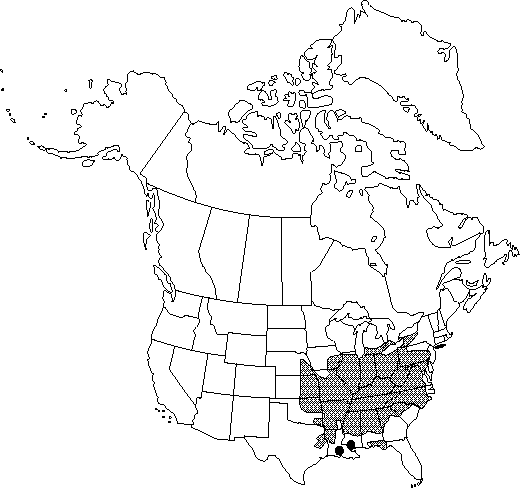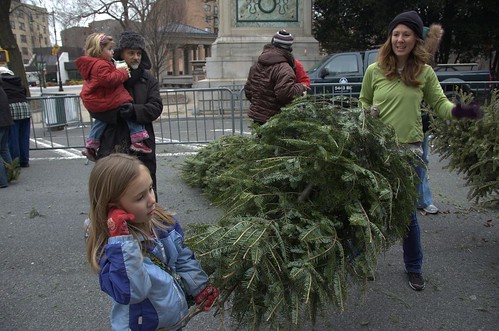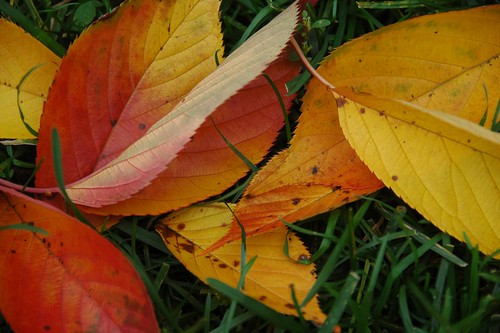Jump to How to Plant a Tree.
Today I planted Amelanchier x grandiflora ‘Autumn Brilliance’, Apple Serviceberry, in my backyard native plant garden. 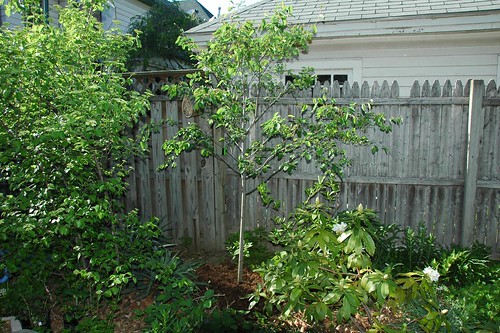
I chose my backyard as my final class project for Urban Garden Design at the Brooklyn Botanic Garden last year. Serviceberry is one of the two key plants I specified for my planting scheme. Serviceberries are multi-season plants. They bloom in early Spring, before the flowering cherries. The berries ripen in mid-summer; they are edible and tasty, and attractive to birds. Fall color is excellent. Branching structure and bark provide winter interest.
Here are the initial sketch and final design for the project. The Amelanchier is the second smallest circle on the left (north) of the plan. In this design for an urban woodland garden, the Serviceberry plays the role of an understory tree. The larger circle on the right is Sassafras albidum, the canopy tree, which is proving even more difficult to source than the Amelanchier.
Here’s how the north bed looked this afternoon, before planting the tree. The large shrub is Viburnum dentatum ‘Blue Muffin’, Arrowwood, which I transplanted here last Spring.
The Serviceberries hybridize readily in the wild. Although I specified A. arborea, A. canadensis, or A. laevis in my plant list, the species have proven difficult to locate. A. x grandiflora is a horticultural hybrid of my preferred species – sources disagree on whether it’s between A. arborea or A. canadensis and A. laevis – so this is a good alternative. Serviceberries are in the Rosaceae, the Rose Family, and so are subject to the same diseases as more conventional fruit trees such as apples. ‘Autumn Brilliance’ is a cultivar selected for its fall foliage and disease resistance.
Serviceberries sucker readily. Their growth is usually shrubby. even the larger species typically grow as trees with multiple trunks, but they can be trained to a single trunk. I went looking for such specimens on Thursday. I found two at Chelsea Garden Center in Red Hook. One was already tagged as sold. I bought this one. 
It’s deceptively small-looking in the photo. That’s a 15-gallon container. Once I got it into the backyard, I had some appreciation for the task I’d set for myself. Here it is set on the wagon I used to wheel it into the backyard.
How to plant a tree
When planting a tree, it’s important not to plant it deeper than it was grown. I measured the depth of the container, and used that as a guide; since the soil level in the container is two inches down from the edge, I took two inches off the height of the container. You can also just take marks against your planting tools. I made final adjustments of depth with the tree in the hole: starting high, then gently tipping the tree and taking out just one shovelful at a time until the top of the roots were just above their original depth.
I also measured the width of the container. Normally, the width is not important: you can dig two or three times wider than the width of the roots, the wider the better. But I was planting into tight quarters – an already planted bed – and didn’t want to have to remove more soil than I needed to. Also, I worked this soil last Spring, when I built out the bed, so I didn’t need to dig a wider hole this time around.


Before I tucked the tree in, I took the opportunity to prune out any broken or crossing branches. It doesn’t affect the look of the tree, and reduces later problems. This is easier to do with the tree on its side than upright. I have a pole pruner to use as the tree gets bigger.
After. See? It doesn’t look any different.
The final challenge: getting the tree to and into the hole without destroying the other plantings. For this, I setup a wide board as a ramp to slide the root ball over the other plants. 
Fortunately, just at this moment, Blog Widow returned home, and a neighbor stopped by. We made quick work of getting the tree in, with little damage to the other plants.
Mature size is 15-25′ high and wide. This will provide critical late day shade for the wildflowers and ferns planted in this bed. I could already see the difference today. Birds will be attracted to the fruit, which ripen before those of the existing Viburnum and Ilex verticillata. With early bloom and excellent fall color, this tree will anchor the garden in all seasons, and help define the space. This is the single most costly plant I’ve ever purchased. It’s one of the best investments I’ve made in the garden.
Related Content
Photos of the day
Viburnum dentatum, Arrowwood, 2009-04-20
Woodland Garden Design Plant List , 2009-02-18




